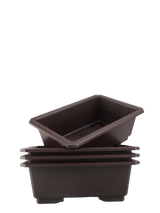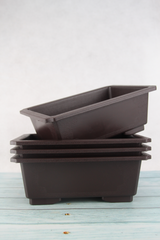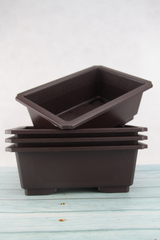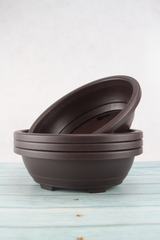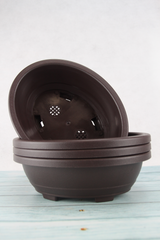Premium Plastic Pot
Somewhere between training pots to actual display pots, lie these premium plastic pots. We use these pots to grow our potted material in the nursery, as do most Bonsai nurseries in the United States. As the thick plastic ensures they will stand up to the elements, without cracking or breaking for years. While remaining in good form, they are also a great depth and size to give your Bonsai room to grow, while getting used to the restrictions of a pot.
If you're looking to train your Bonsai in a premium pot, without the premium price tag. Try one of these Taiwanese Pots.
Although both types have sufficient drainage for Bonsai, we prefer to use the oval-shaped pots, as they have superior drainage.
Size:
Rectangle - 9.5" length x 7" width x 3.75" height
Oval - 9.5" length x 7.5" width x 3.25" height






